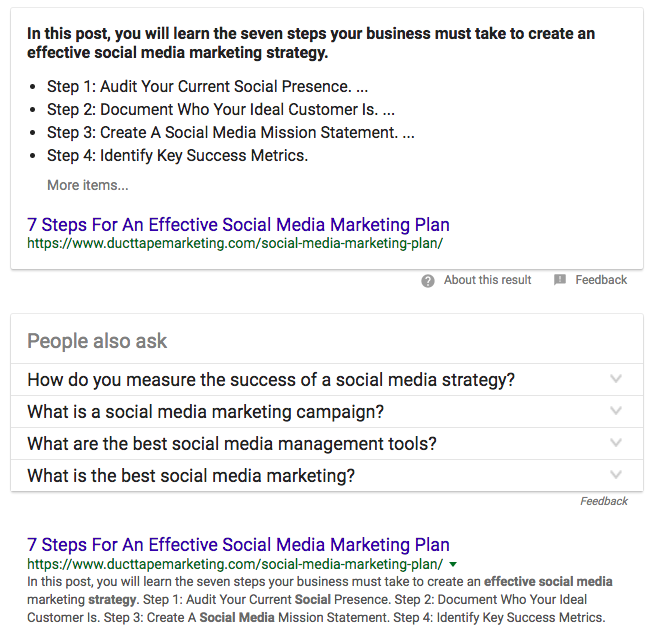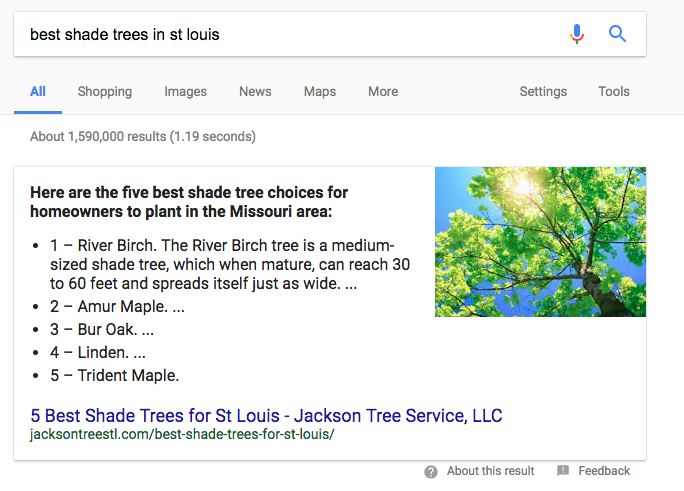Transcript of Getting What You Want in Life written by John Jantsch read more at Duct Tape Marketing
Back to Podcast
Transcript
John Jantsch: You know, just about every interaction we have throughout the day is a pitch of some sort. We’re trying to influence, convince, sell. In this episode of The Duct Tape Marketing Podcast, I speak with Anthony Sullivan. Maybe you’ve seen him on the Home Shopping Network or that Oxyclean guy. He’s the guy that sells mops and sells pretty much all kinds of $20 items to all kinds of people, and there’s a bit that we can learn from his new book called You Get What You Pitch For.
This episode of The Duct Tape Marketing Podcast is sponsored by Podcast Bookers, PodcastBookers.com. Podcasts are really hot, right? But you know what’s also really hot? Appearing as a guest on one of the many, many podcasts out there. Think about it. Much easier than writing a guest blog post. You get some high quality content, you get great back links, people want to share that content. Maybe you could even transcribe that content. Being a guest on podcasts, getting yourself booked on podcasts, is a really, really great SEO tactic, great brand-building tactic. Podcast Bookers can get you booked on two, to three, to four podcasts every single month on autopilot. Go check it out. PodcastBookers.com.
Hello and welcome to another episode of The Duct Tape Marketing Podcast. This is John Jantsch. My guest today is Anthony Sullivan. He is a celebrity TV pitch man, came to you probably first in the Home Shopping Network, but he’s also known by a lot of people, or recognized at least by a lot of people as that Oxyclean guy. Today we’re gonna talk about his new book, You Get What You Pitch For: Control Any Situation, Create Fierce Agreement, and Get What You Want in Life. So, Anthony, thanks for joining me.
Anthony S.: Thanks very much for having me. It sounds great when you read it like that. “Control any situation,” a pretty bold claim, feels like you’re gonna get what you want.
John Jantsch: There’s a lot of good stuff in there for people that I think they could react to. So, most celebrities happen overnight, and I’m sure your story’s no different. But give me a little of your background of how a person becomes a celebrity TV pitch man.
Anthony S.: It’s such a strange title, because as life evolves, I’ve sort of, every now and then I update my bio and I, like okay. I look in the mirror like, “What am I known for?” And I’ve got to be honest, I’m known for pitching, for pitching products. I’ve been pitching since I was in my early 20s professionally, and I started off on the streets in England and working street fairs and street corners and hustling in Cardiff and London and all over the west country of England. And that’s where I kind of fel lin love with the art of the pitch, if you will, and then slowly it evolved into, moved to America to try and get a bigger, a broader audience. And on television. So, that’s how it all started.
And I started off selling mops. There’s a lot of people in my space that have done very well selling mops. So, selling mops was my first product, and I’ve still selling mops to this day, amongst other things.
John Jantsch: It kind of almost reminds me of the, we didn’t call it reality TV back then, but it kind of has that feel, doesn’t it?
Anthony S.: Yeah. I mean, when I, I remember the a-ha moment for me was when I was selling on a rainy, literally a rainy underpass in Bristol, and it was a Sunday afternoon. It was freezing cold in the middle of winter, and I came home and I was chilled to the bone. You know those days when you can’t warm up even when you’re in your car and you’ve got the heat on? You just can’t get warm. And we just had satellite TV put in, into my dad’s house. And I was about 21 years old. And I came in, I was freezing. I had been driving for like an hour and a half in my old Escort van, and I’m sitting in the bath trying to warm up. And my dad had a TV in the bathroom, and I turned on the TV and I saw my first infomercial. And that was when I was like, “Right. That is what I got to do.”
And that’s how it all started.
John Jantsch: So, you know, in some ways, aren’t we all, we may not call it this, but aren’t we all pitching something all the time?
Anthony S.: Well, this is kind of my impetus to write the book, because I think when people see me in my blue shirt and my khaki pants and they hear me talk, they think of Oxyclean and $20 products, like gadgety products, which I in working with Billy Mays, we used our pitching skills to sell products. And as I kind of have gone through life, I found myself using what I learned to, I don’t like to use the word manipulate, but to try and get what I want. This could be as simple as getting the last seat on a plane when it’s over booked, getting a room at a hotel when there’s no rooms left. Just getting somebody to get you what you want.
And that could be a, maybe you have a kid and they’re not in the school program they want and you have to go talk to the coach or talk to the principal. And I started to realize that life is a pitch, whether you’re in your business, out here doing the show right now, whether you’re promoting a book like I’m promoting a book, whether you’re trying to get into college or trying to get a job interview. How you present yourself is the difference between some times getting a yes and a no, getting a door opened and a door closed. So, I’ve always, I found that over the years, I’m like, “Well, I gotta connect with this person. I’m walking into the room, I want to get this gig. I really want this gig. There’s 50 other people who are here to get this gig.”
I need to put my best foot forward in a terrifying situation, which can be a job interview, it can be going to ask a boss for a raise, trying to get into college, or something as simple as trying to get your kids to eat vegan food instead of going to Chuck E. Cheese. How you present it, how you pitch it is the difference. And I think you’re right. To go back to your initial question, ’cause I do like to talk, at some point in your day, almost every day, there’s a situation where you have an opportunity to pitch, and the quality of your pitch will depend on the outcome. So, will have a big effect on the outcome, sorry.
John Jantsch: So, tell me this, ’cause I think a lot of people just make the assumption, “Oh, that person’s just outgoing and they’re confident, and so they’re just better at it.” But it’s really a lot more than that, isn’t it? You have clearly developed some sort of artful aspects of pitching.
Anthony S.: Yeah. When I first did it, I didn’t realize I could pitch until I actually did it. And I had the good fortune to, I think, learn the very basic, the very sort of, the elementary school of pitching, I went to it. This guy called Mark Bingham. He literally sat me down. He said, “Right. Learn these words, do these actions, and then get up and do it. And just do it.” And so he said the one thing, he said, “Just do exactly what I tell you to do.”
And I did, and my very, very first pitch, I remember, I remember exactly where I was. I remember what kind of day it was. I remember I was in Bideford, in England. And I got up there and, “I can’t do this”. I had that moment, that terrifying sort of stage fright when you just freeze. I’m like, “Just do it. You rehearsed it. You practiced it. You can do this. You can do this.” Anyway. I get up, I do it, and the very first pitch I ever did, I sold something. And I was like, I didn’t fumble through it, I did exactly what the guy told me. I pitched it exactly the way and that’s when this light bulb went off in my head and I’m like, “Man, if I just repeat that again and I get better at it, I’ll turn one sale into two, two sales into four, four sales into eight,” and before I knew it, my stage was bigger, I was working in London. Sorry.
Working in London and then I ended out accelerating to television very quickly. But I really followed the fundamentals. So, I mean, I think I do have an outgoing personality and I have a British accent, which I think maybe helps a little bit in this country. But I, sorry about the phones going. Our phone system’s been out for days, so it’s just coming back online right now. I feel terrible.
John Jantsch: That’s all right. We’ll treat this like live, even though this is recorded, I like to have the live elements in it.
Anthony S.: The better I got at it and the more I did it, and the more I fell in love with it, I just practiced it religiously. And I don’t think I was born into it. And I’ve trained people who are wallflowers, who are afraid, who are, “I could never do that”. My brother. I trained my brother. My brother never got up in front of a person in his life. And I said, “Bro, come to America. I will teach you how to pitch. If you don’t make enough money in the first month to pay me back the airline ticket and cover all your hotel expenses, the trip’s on me.”
He came out to California. I taught him how to pitch. He met a girl because he was pitching. And they got married, he lives in California in a million dollar house in Venice Beach, all on the back of a pitch. He never sold anything in his life until I taught him. So, I think I can teach anybody.
John Jantsch: So, give us two or three or however many you want, are there elements that are available or, I shouldn’t say available, but mandatory in a pitch?
Anthony S.: Well, what I tried to do in the book is get away from selling product, and I think what I tried to do is go, “You know what, the best product you’re ever gonna sell is yourself.” And no one’s got you like you. So, I felt what I wanted to do is sort of, how do I translate how I would sell a product into selling a person? Whether it’s a job interview, getting into college, asking for a raise, getting what you want. So, I tried to take some of the basic skills of pitching and worked them into, I call them my 10 superpowers, from knowing your acceptable outcomes, I’m very big on preparation, obsessive preparation.
I don’t think that’s, I don’t think I’m the first person in life to say, “Hey, the more you practice, the better you’re gonna get at it,” but that was a big part of pitching. I talk about how to make an entrance and take control. It was so funny, I actually watched a Katy Perry documentary the other day. I don’t know if you’ve seen the documentary, but Katy Perry, before her career took off, needed a new manager. So, they interviewed the manager, and they said that Katy walked into the room, did a cartwheel, and dropped into the splits. So, I talk about making an entrance and taking control.
Now, I’m not saying that everyone should walk in the room and do a cartwheel and do the splits. But that was Katy’s way of letting that manager know that she had some serious talent and she was ready to throw down. And I think that making an entrance and taking control is very, very important. And I’m not talking about walking into a room, blowing the doors off so that you announce yourself. But when you walk in the room, you look good, you know exactly what you want, and you know your acceptable outcomes, your posture’s great, you’re ready to go. And when I say, “Take control,” I’m not like take control of the whole room, but take control of the situation that you want.
So, I talk a lot about that. I really, I’m very big on breaking down the sort of barrier. Innately, I think especially with technology the way it is, we’re all kind of married to our cell phones and look at them something like 120 times a day. Everyone’s got this sort of force field up. Nobody wants to be bothered. A lot of people don’t want to meet new people, they don’t want to have a conversation. They’re very comfortable on their phone, replying to a text message in digital land. So, I talk about breaking down that barrier and opening that connection, when to push back if things aren’t going your way.
And one of my favorites is, and it kind of goes against the whole ethos in selling, is to never be closing. You don’t have to close. You don’t have to go in and make this giant case for yourself. Trust the process and enjoy the process. Do it with a smile on your face, and before you know it, you’ll find there’s opportunities in every single day when a good pitch can make a huge difference. And I’m not talking about being at my level of like trying to sell a product. Just how to walk in a room, how to take control, how to tell a great story, how to go for it, lay it all out there, and get what you need, get what you want.
And I use the term fierce agreement because when it’s working, when the process is working, you can literally watch the physical barriers come down. You see people nodding in agreement. You make the arms folded, which normally is a resistance to whatever’s happening, all of a sudden, arms will open up. There’ll be smiles, there’ll be agreement. People will, “That seems like a great idea,” you get this sort of, what I call fierce agreement. When you’re agreeing with me, I’m not selling you something right now, we’re just in, we’re doing this. So, I really tried to get into the mechanics of how to pitch.
John Jantsch: Let me ask you this, could you, now I should say would you, enthusiastically pitch a product that you didn’t believe in yourself?
Anthony S.: I’ve done it. And I did it in my early careers. I’m not gonna sit here and lie to you. I was young and I was easily manipulated. I’d just come onto the scene and I think some unscrupulous marketing people were like, “This kid can sell anything. We need to put the big carrot and dangle it in front of him and he’ll do it.” And I was not very good at saying no. I’ve gotten a lot better at it over the years, when I just won’t do it. And I have done it, and I’ve lived to regret it because I just have like, “You know what, that was a really crappy product and people were probably not satisfied with their experience,” so I own it. And I quickly learned, the last two pages of my book is called Use Your Powers for Good, because there are plenty of snake oil guys out there who are great pitch people and we’ve all seen them, you know?
The weight loss guys, the get rich quick guys, the house flipper guys, some of the guys out there selling Jesus, you know what I mean?
John Jantsch: Yeah.
Anthony S.: It can get very unscrupulous, and I did get sucked in earlier in my career and one of the products was 100% callback, and I remember being mortified that I had been involved in that, so I’m really, really careful now in my career to make sure that the products I’m selling put a smile on people’s faces, they’re worth the money, they give the end user a great experience. And I use Oxyclean as an example. Oxyclean is just as good as it gets when it comes to a stain remover and a laundry detergent. So, I’m pretty selective right now.
John Jantsch: Well, and the flip side of that, though, is you probably also find that if you’re excited about a product, it really makes the pitching not only more genuine, but just easier, doesn’t it?
Anthony S.: Yeah, this is the thing, and I think people think I’m a little bit weird, ’cause I get excited about a mop. I just have a mop that came into my office about six weeks ago, and I’m not kidding you. I get out of my chair and I’m like< “We are going to sell the crap out of this.” And people are looking at me like, “Why are you so …” I’m like, “Are you kidding me? Look at this thing. It’s unbelievable.” And when I have that level of excitement, that always bleeds into the pitch. And I think you can see it in my eye. When I like something, I can sell it. But when I really like it, it will come across. And if you’ve got $20 in your pocket, you’ll be $20 lighter by the time I get done with you.
John Jantsch: So, how do you recommend people practice this and get better? ‘Cause I know you do talk about your preparation and rehearsal, I guess, we would even call it. Are there some things you would suggest people do that help them get better?
Anthony S.: I do it like all the time. I find myself unconsciously doing it. If I’m on a, checking in for a flight, I will make a conscious effort to have a conversation with the person checking me in, even if I want something or I don’t want something, to make that person, to lighten that, kind of her day a little bit. When I’m going through TSA, if I chat to the security guard, I guarantee you’re gonna have a better experience and probably not gonna get the shakedown, although you might do randomly.
When you’re getting on the plane, the flight attendant. There’s opportunities every single day to reach across that aisle, if you will, or reach across that terrifying void and make a connection. So, when you’re practicing it on random people, and when you don’t want anything in return, you’re just being nice for the sake of being nice, you’re practicing your pitching skills. You’re practicing connection. You’re practicing eye contact. You’re practicing maybe a gentle touch to break that physical connection where you touch someone on the shoulder or you shake their hand, a nice, firm handshake.
So, I will practice, you can practice at 7-Eleven. ‘Cause I guarantee you, that clerk behind the desk probably hasn’t anyone been nice to her all day. Just literally by making a comment about how that person looks or asking them about their day, I’m talking just about connecting and pitching is a lot about connecting. It’s making that extra effort to make a friend. And if you look for it, you’ll find it. And that’s what, so I practice ’cause it makes my day better. I always like it when I walk into a gas station and you say something funny to the attendant behind the bulletproof glass, and you’re just gonna lighten their load a little bit.
So, and then you save, the more you get into those everyday interactions with people, the better your outcome’s gonna happen when all of a sudden, you gotta make it work, and you’re like, “Right. I need this job. I need this pay raise. I need this loan. I need to get funded. I got to get this. I want this girl to say yes to get her phone number because she looks beautiful and I think she’s the one.” If you randomly practice talking to people on a daily basis, you’re not gonna be as terrified when you actually, when it’s on the line. So, I practice almost every opportunity I have.
Which I think some times, people say, “Oh, Sully is so outgoing.” It’s by design. I had no choice, right? You can just go through life and skate through it, or you can go that extra mile and try and make that connection. And pitching is that, it’s making that connection.
John Jantsch: Yeah. So, I was gonna ask you about life lessons in the art of doing this, but you’ve kind of just shared some. So, how are some of the best. Are there people we should be watching? Are there shopping network shows we should be watching to maybe, obviously most of the people listening are not ever gonna sell a mop to anybody, but are there things that we could pick up from watching some of the people that are doing it every day?
Anthony S.: I think some great politicians. I mean, politicians are great pitch people, and if you, I know there’s plenty of Trump haters and Hillary haters, and Hillary lovers out there, and the last election got very, very dirty. But when you strip away, especially the Republican primary, that actually, I’ve got to give it to Trump. He pitched his way through that primary like I’ve never seen. I’m not saying Trump is the gold standard of pitching, but there were some lessons in there for how he positioned himself and how he reached out, and how he connected with his base and how he basically completely stole the show, if you will. I don’t like to use the word steal, but won the presidency. It’s fairly impressive and I looked at it, and I’m like, “You know what, that was a good old fashioned pitch.” He picked his tag line, “Make America great again,” and he labeled those Republican candidates he was up against. He gave them a label, he went right at them.
Like it or don’t like it, he was great at it. I often will look at musicians. Great musicians, when they walk out on stage, they’ve got it. They’ve got that connection, they rehearsed it, they’ve got the movements. They’ve got it down completely. You know, and even when you look at the great talk show hosts. Carson. Leno. Letterman. Kimmel. Fallon. They’re phenomenal at what they do. They’ve got that connection and they’re up there commanding your attention. You’re watching them. You can’t get enough of what they say, and they’re pitching their show. Great stand up comics have all the ingredients that make a great pitch person. So yeah, I definitely study, I love to study, watch some of the great politicians.
I mean, this may sound really odd. Governor Scott during Hurricane Irma had to evacuate something like 25 million people, I forget how many people it was. And he pitched every single Florida resident to get the hell out of Florida. And they all left, you know? So, right across from political to entertainment, to Steve Jobs, who I think is one of the best pitch men ever. Steve would get up there in his jeans and his white sneakers and his black polo top. Never changed his uniform. And every time he’s get up there, you were just waiting to see what came out of his mouth. And Steve nailed it, and then of course, there’s my buddy Billy Mays. You ever want to get a crash course in how to pitch, Billy Mays was the greatest.
John Jantsch: So, Anthony, where can people find out more about you and what you’re pitching these days in addition to-
Anthony S.: Anthony Sullivan. AnthonySullivan.com is my website and I’m speaking in Orlando, actually I would tell you where I’m speaking in Orlando, but it’s coming up in November. I’m doing a keynote speech. @SullyonTV over on Instagram, I’m SullyonTV, S-U-L-L-Y on TV. And that’s Twitter. And on Facebook, I’m Anthony Sullivan. So, I’m pretty easy to get and I love to have interactions with fans if anybody wants a Facebook message or a video message for a birthday or an anniversary or something silly for a kid, I’m always up for it. Just reach out to me on Instagram and I’ll shoot you off something.
John Jantsch: All right. Well, that was a bold offer, ’cause I suspect you’ll get some response to that.
Anthony S.: And I have one to do today, actually. I had to do one to some girl, she wanted me to say, “Quaking in my boots.” So, I said, she said, “I’m quaking in my boots.”
John Jantsch: All right. There you have it. Well, Anthony, thanks for joining us, and go out there and find You Get What You Pitch For.
Hey, thanks for listening to this episode of The Duct Tape Marketing Podcast. Wonder if you could do me a favor? Could you leave an honest review on iTunes. Your ratings and reviews really help, and I promise I read each and every one of them.

![]()


 Michael Holloway is the Lead Writer at FBI Consultancy Ltd. He is a professional writer and author. His website is www.mjdholloway.com and his company website is www.fbiconsultancy.com. If you need to retain an interim director, business troubleshooter, business growth consultant, or LinkedIn consultancy, contact us on (+44) 0151 647 1716
Michael Holloway is the Lead Writer at FBI Consultancy Ltd. He is a professional writer and author. His website is www.mjdholloway.com and his company website is www.fbiconsultancy.com. If you need to retain an interim director, business troubleshooter, business growth consultant, or LinkedIn consultancy, contact us on (+44) 0151 647 1716 Simon James is a Marketing Consultant. He owns a Marketing Agency and Hosting Company. In addition, he runs the blog
Simon James is a Marketing Consultant. He owns a Marketing Agency and Hosting Company. In addition, he runs the blog  C’mon, how are you going to be like Amazon – I mean, why would you want to?
C’mon, how are you going to be like Amazon – I mean, why would you want to?